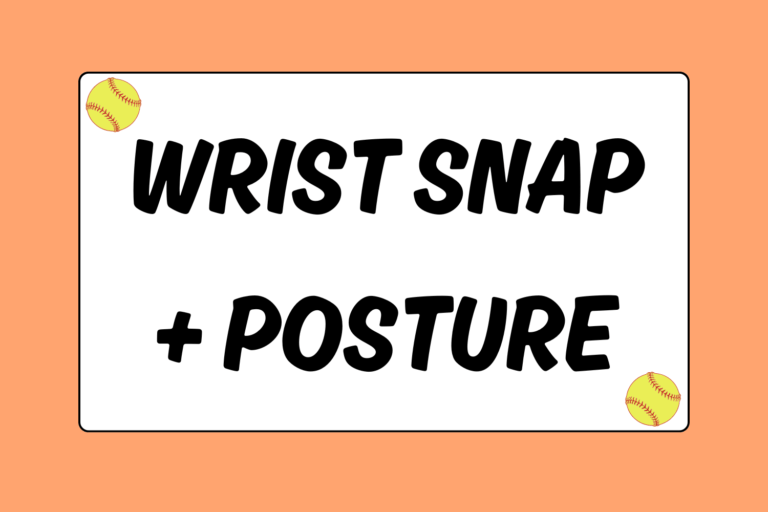After you take your lead-off, don’t ever turn your back to the catcher and lollygag back to the base — you should always hustle. Sure, it’s fun to test the catcher and see just how far you can go before having to scamper back, but unless you are doing a delayed steal, you have to get back eventually (and getting picked off is never fun).
Follow along with the tips outlined in this softball guide and learn how to retreat back to a bag in the quickest fashion regardless of the situation.
Shuffle
Do not cross your feet when you are leading off the base. Imagine you’re taking a lead-off and the catcher tries to pick you off. You would need to turn and sprint in the opposite direction back to the base. If you’ve crossed your legs, you’ll wind up tripping on your own two feet! Because of this, you never want to cross your feet when you are leading off or retreating. Rather, you want to shuffle:
- Shuffle side-to-side and get low.
- Always lead the shuffle with the foot closest to the bag you’re going back to.
- Keep your eyes on the ball at all times.
- Always stay squared towards the catcher.
Shuffling is faster and it gives you more mobility for quick direction changes.
Hot Tip: Drill the Dive & Shuffles
In every practice, you should drill your lead-offs and retreats. Below is a simple routine that will work every situation.
- Three girls line up along the first base line in front of, on, and behind first base.
- The coach will mimic the pitcher’s motion. On the release, all girls should take their leads and break down properly.
- The coach will call the play:
- The ball was popped up: Shuffle back and stay ready for the catch, and then go!
- The hit is a line drive: Dive back to the base.
- The catcher is trying to pick you off: Dive back… It’s an overthrow! — get up and go!
- It’s a passed ball: Go!
Working this into every practice will help make retreating and reacting second nature. Just remember, practice it as if it were a real game and react quickly.
Turn & Dive
In case a catcher tries to pick you off, or a line drive catches you dead in your tracks off the bag, you have a few options. In the case of the pickoff, you can pivot and head to the next base or you can dive back. In the case of the line drive, you better get back quickly!
Diving back is fairly simply, but you must be smooth. Otherwise, you’ll end up a few feet short of the bag, or worse — injured. Below are some tips that will get you safely to the base:
- After leading off (linked to lead-off guide), you should be at least three strides out.
- Stay low and keep your chest squared to the catcher.
- Leading with your left hand, reach towards the base from which you came.
- Start turning your body towards that bag and take about two strides towards it. You need to get progressively lower with each stride.
- After your second stride, push off the ground with the ball of your lead foot (the one closest to the bag) and propel yourself forward along the dirt as your back leg comes forward (in its natural stride). Reach for the bag with your right hand.
- Grip the base with your right hand on the outside corner (closest to the outfield).
- Turn your head towards the outfield.
- Stay on the ground until you can ask the umpire to call time so you can get up and brush yourself off.
The most important part of the dive is to turn your head away from the infield. You do this for two reasons:
1. Safety
If you are facing the infield and the ball is thrown low and off target, you’re in danger of getting hit in the face with the ball. Even with a mask on your helmet, this will still hurt because your face will be susceptible to debris in the dirt. Facing away from the bag will keep you safe.
2. Seeing the Ball
If you are facing the outfield, you have the best view of passed balls. If you are facing the infield and the ball is thrown off target, it takes longer to turn around, find where the ball went, and decide if you can advance a base. When your head is turned and you’re already facing the outfield, though, you will be able to see a overthrow and react immediately. This will give you a much better chance at taking an extra base. Just remember, you cannot hesitate. The instant you see the ball get by, and an outfielder isn’t close enough to stop you, get up and go!
Test the Catcher
Start taking bigger and bigger leads as you become a smarter and quicker base runner. With every lead-off, you want to be close enough to get back to the bag in time for a line drive or pick-off, and far enough to advance on a passed ball.
As you get more comfortable with retreating back to the bag, you’ll be able to know your limits so you can test the catcher. Toy with her a little, and make her throw. The best you can hope for is a wild throw — then you’ll be safe regardless!





